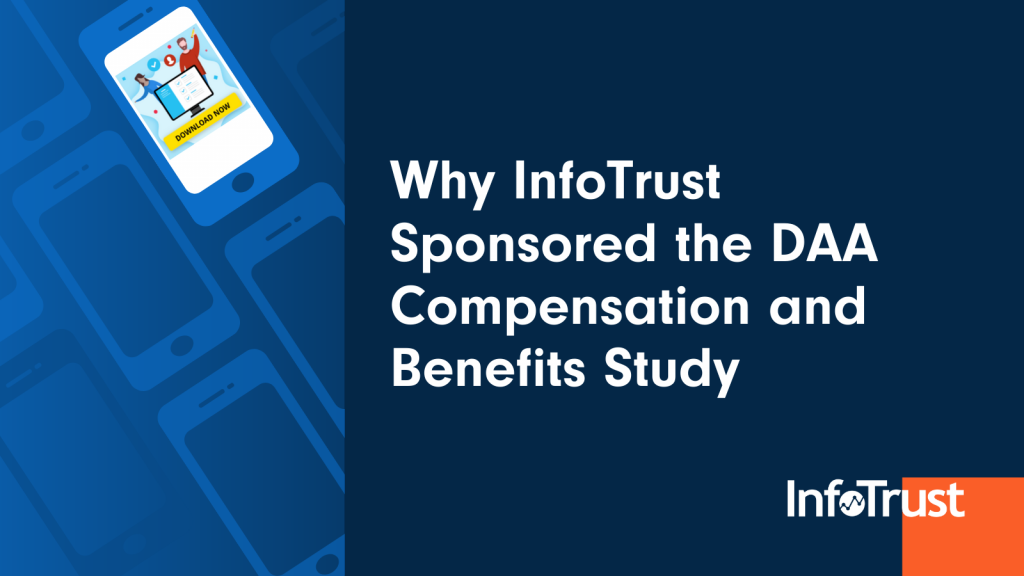In May 2020, the Digital Analytics Association launched a new industry compensation survey in partnership with InfoTrust. In the DAA’s words, “This survey sought to measure compensation levels, identify typical benefits, and to determine to what degree various factors drive your earnings and perceived value with employers in the U.S. and internationally.” Key findings were announced at DAA’s OneConference in October 2020, and the report is now available for download on their website. (Free for DAA members and individuals who completed the survey; available for purchase for non-DAA members).
Why did InfoTrust decide to sponsor this survey and analysis?
At InfoTrust, our team takes our core values of respect and diversity seriously. Our hope is that this study provides visibility into the real pay scale of the analytics industry, and that companies will use this information to create fair compensation plans for analytics professionals across their organization—regardless of employees’ gender, race, or ethnicity. At InfoTrust, we are using this data to evaluate our own pay structure, with an aim of increasing fairness and mitigating unintentional biases.
In fact, the findings of this study are empowering us to make improvements to our compensation payscale and salary bands right now, as we feel strongly we need to “put our money where our mouth is” to promote equality and transparency.
Below we highlight some of the key findings (or interpretations) from the results that are leading to changes within our organization (with our salary bands/ranges for various analytics roles).
[Note that we also reviewed other data sources, like Payscale.com, for an even wider industry view, though we heavily-weighted the DAA survey results given the focus on the industry.]
The vast majority of DAA survey respondents were based in North America. Most respondents (61%) work in corporations, with 26% in consulting firms and far fewer in government, non-profit, university/college, or self-employed settings.
Salary and Wages
Overall salary/wages are 18% higher among professionals who work for employers with 5,000 or more staff (compared to those with fewer than 100 employees). This same differential appears between professionals employed by organizations with at least $1 billion in annual revenue compared to those who work for organizations with less than $50 million in annual revenue.
Why this matters: We see in the industry that larger corporations may have more substantial compensation offerings, but other organizations, such as consulting partners, skew the benefits and flexible offerings to balance this out and remain competitive.
Paid Time Off (PTO) and Leave
A mean of 9.5 paid holidays and 24 days of leave are granted per year.
Why this matters: The survey data was collected prior to the COVID-19 pandemic; it also doesn’t account for unlimited vacation offerings that the majority of smaller, consulting corporations provide. It will certainly be interesting to watch how companies approach remote work and paid time off now, as many companies have enforced temporary work-from-home policies due to the pandemic.
Tenure
Survey participants reported an average of 2.7 years in their current position, 4.9 years with their current employer, and 8.3 years in the digital analytics field. Despite working a relatively short period in the field, they report a mean of 3.4 positions held in digital analytics. They also report a mean of 6.8 years in other fields, or a total of 15.1 years of professional experience at a mean age of 38 years.
Why this matters: In general, positions in digital analytics suffer from high turnover rates. The organizations that will “win” are those that have a strong culture and are able to retain talent for longer periods of time.
In general, our findings from the survey were encouraging. Our team is in the process of making some modifications with titles and compensation offerings for certain roles to promote equality.
We hope the survey results and findings will help you and your team achieve greater fairness and pay equality in your analytics organization, as well.


